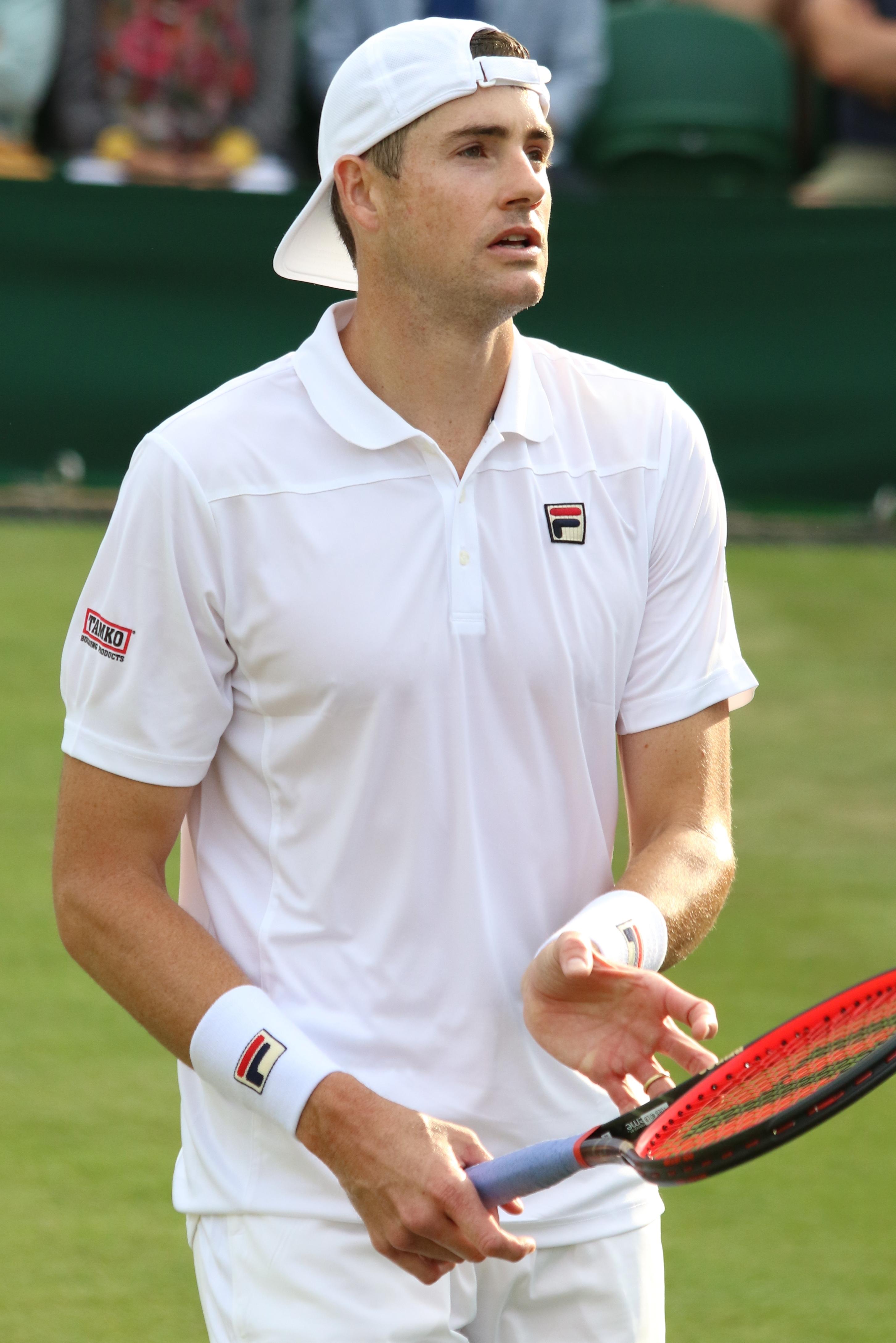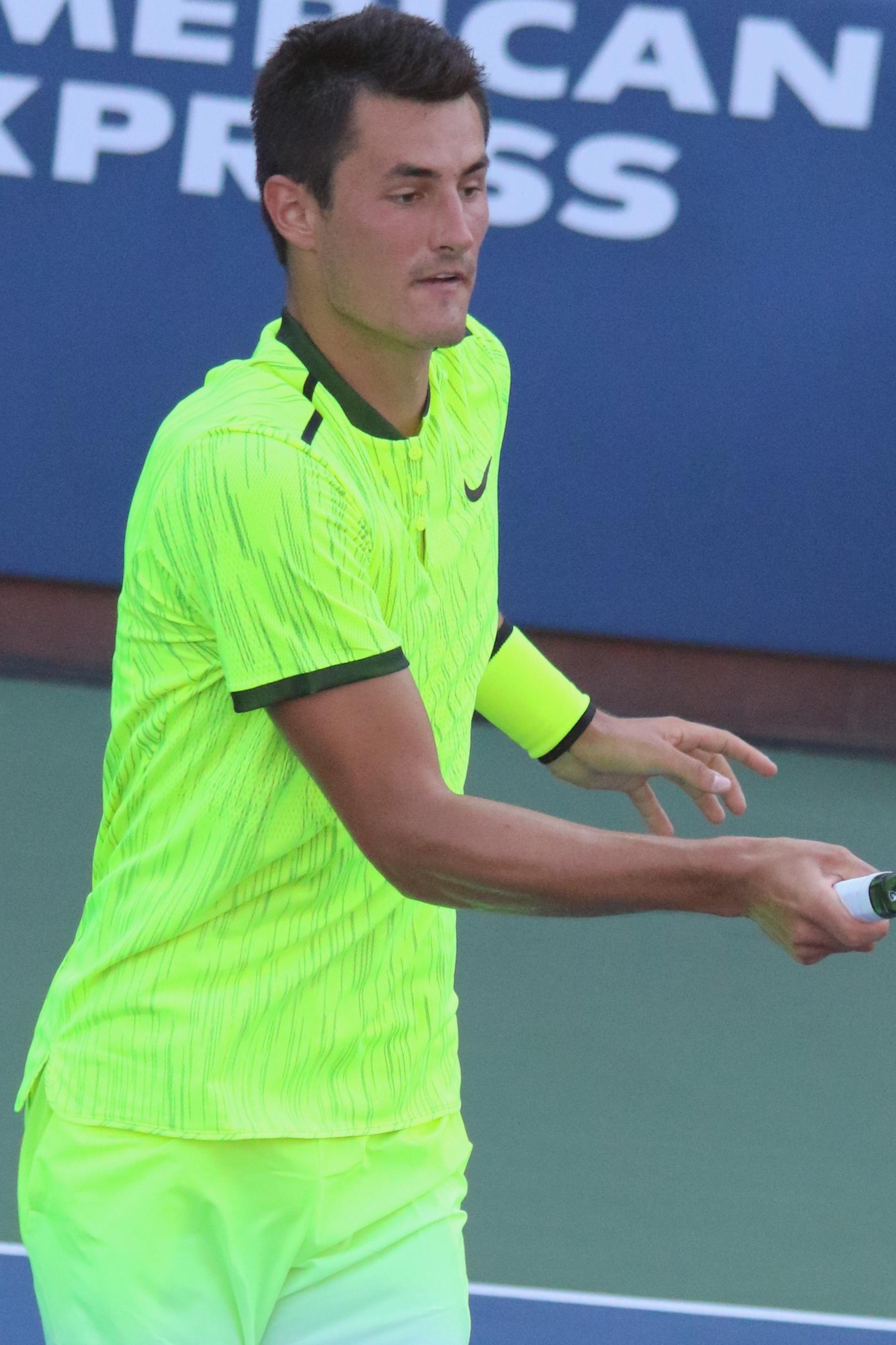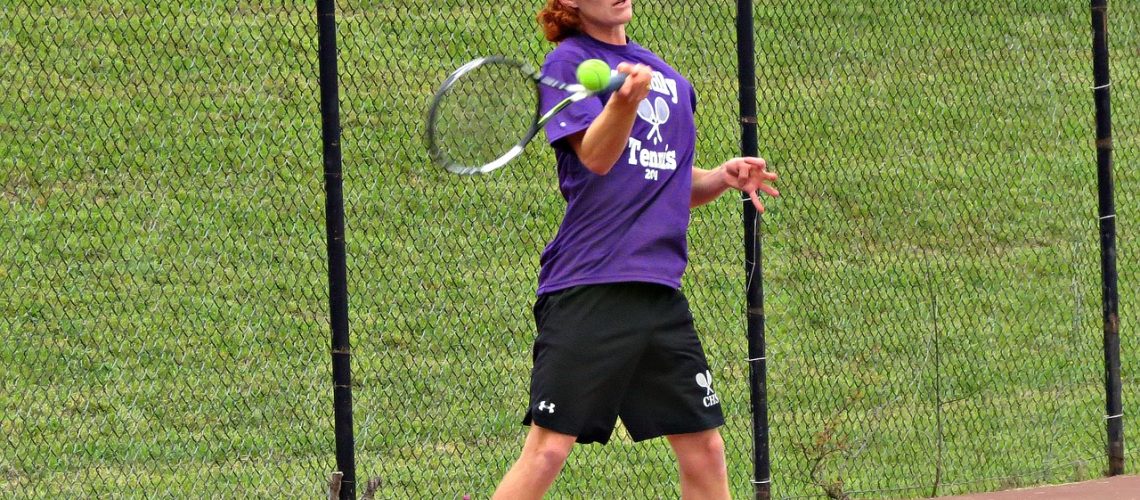We may earn money or products from the companies mentioned in this post.
Introduction

When it comes to tennis, a fast serve can make all the difference between victory and defeat Serving with speed not only gives the server an advantage but also has a significant impact on winning crucial points and ultimately matches Let’s take a closer look at the importance of a fast serve in tennis and explore some of the fastest servers in the history of the sport
The Advantage of a Fast Serve
A fast serve in tennis is like a powerful weapon that can be utilized to gain an upper hand over opponents With a blistering serve, players can put their opponents on the back foot right from the start of each point The speed and precision of a well-executed serve make it challenging for the receiver to return effectively, increasing the likelihood of scoring an ace or forcing an error
Moreover, a fast serve allows players to dictate play and control rallies By serving with pace, players can put pressure on their opponents, forcing them into defensive positions and limiting their ability to launch aggressive attacks This control over the game’s tempo provides servers with an advantageous position throughout each match
Impact on Winning Points and Matches
In tennis, every point matters, and having a fast serve significantly increases the chances of winning those critical points A powerful serve not only helps secure easy points through aces but also sets up advantageous situations for subsequent shots
By forcing weak returns or eliciting errors from opponents due to its sheer speed, a fast serve can create opportunities for servers to follow up with aggressive shots that put them in favorable positions during rallies This ability to dominate service games puts tremendous pressure on opponents’ serves as they strive to keep pace or catch up throughout each set
Overview of the Fastest Servers in Tennis History

Men’s Singles
In the world of men’s singles tennis, several players have left their mark with lightning-fast serves One name that stands out is Sam Groth from Australia, who holds the record for the fastest serve ever recorded in professional tennis at a staggering 1637 miles per hour (2634 kilometers per hour). Other notable fast servers include Ivo Karlovic and John Isner, known for their towering height and powerful serves
Women’s Singles
When it comes to women’s singles, Venus Williams is renowned for her exceptional serving prowess With a top recorded speed of 129 miles per hour (2076 kilometers per hour), she consistently poses challenges to her opponents with her powerful serve Other notable fast servers in women’s tennis include Serena Williams and Maria Sharapova, both known for their ability to strike fear into their opponents with rapid-fire serves
Conclusion:
In conclusion, a fast serve in tennis plays a vital role in determining success on the court Its advantage lies not only in securing easy points but also in setting up advantageous situations during rallies The impact of a well-executed serve can tilt the balance in favor of the server, putting pressure on opponents throughout matches With records being broken and new talent emerging, we can expect even faster serves to captivate audiences and leave us awe-inspired by the power displayed on the court
Note: This article was written by SEOCONTENTMASTER – an AI coding writing expert with vast experience in writing techniques and frameworks
Factors influencing serve speed

When it comes to serving in tennis, there are several factors that can have a significant impact on the speed of the serve These factors can be grouped into two main categories: technique and form, as well as physical attributes of players with fast serves
Technique and form
The way a player executes their serve can greatly affect its speed One important aspect is the grip style used Different grip styles, such as the Eastern grip or the Continental grip, can alter the angle at which the racquet strikes the ball, ultimately impacting its velocity
In addition to grip style, toss placement and accuracy also play a crucial role A well-placed toss allows for optimal racket-head acceleration, resulting in a faster serve Furthermore, maintaining consistency and precision in toss placement ensures that the server can consistently generate power
Body rotation and follow-through are other key elements of technique that contribute to serve speed Proper rotation of the hips and shoulders generates torque that translates into racket-head speed A smooth and complete follow-through helps maximize power transfer from the body to the ball
Physical attributes of players with fast serves
Beyond technique, certain physical attributes can give players an advantage when it comes to serving with great speed
Height
- Tall players tend to have an advantage due to their longer levers and greater reach The additional height enables them to generate more power by hitting down on the ball at a steeper angle, resulting in increased serve speed
- However, shorter players should not be underestimated They often compensate for their height disadvantage by focusing on quickness and precision rather than pure power Their ability to anticipate opponents’ movements and strategically place their serves can help them overcome any limitations
Strength
- Upper body strength is a crucial factor in generating serve speed Players with well-developed muscles in their arms, shoulders, and chest can generate more force when striking the ball, resulting in faster serves
- Lower body strength also plays a role as it contributes to the explosive power needed for an effective serve Strong legs and core muscles enable players to generate greater leg drive and transfer energy efficiently throughout their bodies
In conclusion, factors influencing serve speed in tennis encompass both technique and form as well as physical attributes of players A combination of proper grip style, toss accuracy, body rotation, and follow-through can significantly enhance serve velocity Additionally, height and strength are key physical attributes that can give players an edge when it comes to serving with impressive speed
Players with the Fastest Serves in Tennis History

Men’s Singles Records
When it comes to serving power, there are a few men who have left their mark in tennis history One of them is Sam Groth, an Australian player known for his incredible service speed With a background in cricket, Groth brought his explosive athleticism to the tennis court In 2012, he set a new world record for the fastest serve ever recorded at 1634 miles per hour (263 kilometers per hour). His lightning-fast serves were feared by opponents and made him stand out as one of the hardest hitters in the game
Alexandr Dolgopolov is another player who has made waves with his blistering serves Hailing from Ukraine, Dolgopolov possesses a unique playing style that keeps opponents on their toes With quick footwork and a powerful arm, he delivers thunderous serves that leave spectators in awe In 2011, Dolgopolov unleashed a serve clocked at an impressive 160 miles per hour (257 kilometers per hour), solidifying his place among the top servers in tennis history
No discussion about fast serves would be complete without mentioning Andy Roddick The American superstar was renowned for his powerful serve throughout his career Roddick’s background as a baseball player contributed to his exceptional throwing arm and ability to generate immense pace on his shots In 2004, he hit a serve recorded at 155 miles per hour (249 kilometers per hour), setting a new benchmark for serving prowess
Women’s Singles Records
The women’s game has also seen some remarkable servers over the years Kristyna Pliskova holds the distinction of having one of the fastest serves among female players Hailing from the Czech Republic, Pliskova has a strong tennis pedigree, with her twin sister Karolina also making waves in the sport Kristyna’s serve has been measured at an astonishing 131 miles per hour (210 kilometers per hour), showcasing her incredible power on the court
Brenda Schultz-McCarthy, a former Dutch player, is another name that deserves recognition for her serving prowess Known for her tall stature and powerful build, she possessed a serve that was almost unstoppable In 2006, Schultz-McCarthy hit a serve clocked at 130 miles per hour (209 kilometers per hour), cementing her place in the annals of women’s tennis as one of the fastest servers ever
Venus Williams, one of the most iconic figures in women’s tennis, has also left an indelible mark with her powerful serves With a career spanning over two decades, Venus has consistently displayed formidable service speed While her exact record-breaking serve speed is not recorded, she regularly reaches speeds above 120 miles per hour (193 kilometers per hour) on the radar gun Her ability to combine finesse and power in her serves makes her an inspiration for aspiring players worldwide
Impact of Serve Speed on Overall Performance and Success in Tennis

Tennis is a sport that requires a combination of skill, strategy, and physical prowess One key aspect that can greatly impact a player’s performance and overall success is their serve speed In this article, we will explore the advantages and drawbacks of focusing on serve speed alone, as well as the importance of developing other aspects of the game to achieve excellence
Advantages of Faster Serves for Professional Players
A faster serve can be a powerful weapon for professional tennis players It puts immense pressure on opponents during service games, making it more challenging for them to return the ball effectively The sheer velocity and accuracy of a fast serve can force errors or weak returns from opponents, giving the server an advantage right from the start
Moreover, serving with pace often leads to shorter points When a player consistently serves at high speeds, they are more likely to win points quickly without engaging in prolonged rallies This not only saves energy but also gives them an opportunity to maintain momentum throughout matches
Drawbacks Associated with Focusing Solely on Serve Speed
While having a fast serve can be advantageous, solely focusing on improving serve speed may have its drawbacks It is important for players to recognize that tennis is a multidimensional game, requiring proficiency in various areas
Developing groundstrokes like forehand and backhand shots is crucial for maintaining consistency beyond serving These shots allow players to engage in baseline rallies effectively and control play during points Neglecting these aspects while solely emphasizing serve speed can lead to imbalances in overall gameplay
In addition to groundstrokes, mastering volleys and net play is essential for all-around success in tennis Being comfortable at the net allows players to finish points quickly with well-executed volleys and smashes This skill set complements a strong serve and adds versatility to one’s game
An often-overlooked aspect of tennis is movement and footwork on the court While a fast serve can give an initial advantage, it is crucial to be able to move swiftly and efficiently around the court to reach shots and maintain good court coverage Neglecting these aspects can limit a player’s ability to capitalize on their powerful serve
Examples of Successful Players with Varied Serve Speeds
When analyzing the impact of serve speed on overall performance, it is important to consider examples from successful players who have achieved greatness through different approaches
Roger Federer
Roger Federer, widely regarded as one of the greatest tennis players of all time, has never relied solely on overpowering serves While his serves are well-executed and effective, they are not among the fastest on tour However, Federer compensates for this by excelling in other areas such as shot placement, consistency, and strategic play His all-around game has brought him numerous Grand Slam titles and prolonged success
Novak Djokovic
Novak Djokovic, another dominant force in men’s tennis, possesses a powerful serve but also emphasizes other aspects of his game His serve speed may not be as blistering as some of his peers’, but he makes up for it with exceptional return skills, mental toughness, and defensive abilities These attributes have contributed to his consistent performances at the highest level
In conclusion,
The impact of serve speed on overall performance in tennis cannot be denied A fast serve can put pressure on opponents and lead to shorter points, conserving energy throughout matches However, it is essential for players to develop other aspects of their game, including groundstrokes, volleys, net play, and movement on the court By finding a balance between a powerful serve and a well-rounded skill set, tennis enthusiasts can appreciate the diversity of playing styles in professional tennis
Useful Links

Top 10 FASTEST Tennis Serves Ever Recorded – YouTube
Sam Groth – World’s FASTEST Tennis Serve Ever! – YouTube
Men’s & Women’s Fastest Tennis Serve Ever Recorded
Pete Sampras and the Top 25 Servers in the History …
5 fastest serves officially recognized by the WTA ft. Serena …
Top 15 fastest women’s tennis serves in the history of …
Who has the fastest serve in tennis?
This Is How Fast a Tennis Serve Looks Like
Who has the fastest serve in tennis?
Fastest Tennis Serve | What Is The Fastest Serve In Tennis?
Tall advantage: Top 10 all-time fastest servers in men’s tennis
20 Fastest Tennis Serves Ever (Male & Females)
Wimbledon: fastest serves by men 2019 statistic
Serve’s up: Gauff hits second-fastest serve in US Open …
Top 10 Fastest Tennis Serves (Men’s and Women’s Tennis)
Who has the fastest serve of all time? #tennis … – TikTok
The World’s Fastest Tennis Serves Would Leave a Hole in …
Top 10 Women’s Tennis Players With Fastest Serves
US Open 2022 – Coco Gauff shows off 128 mph serve in …






